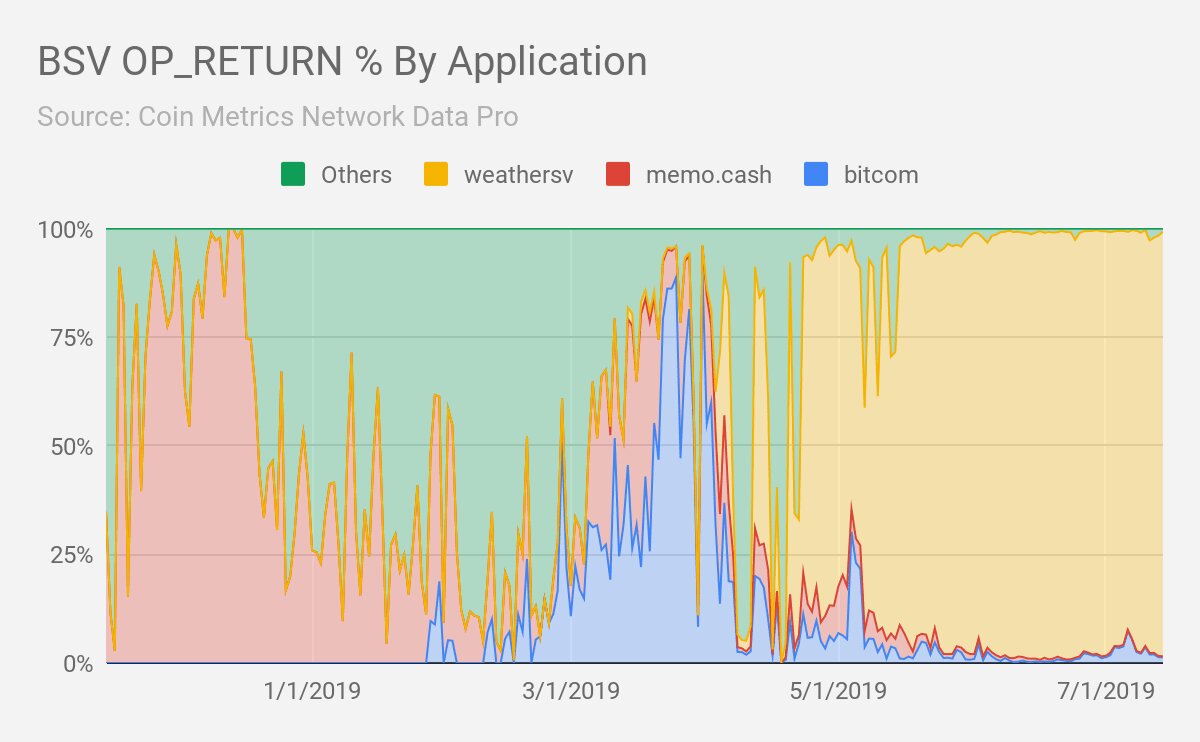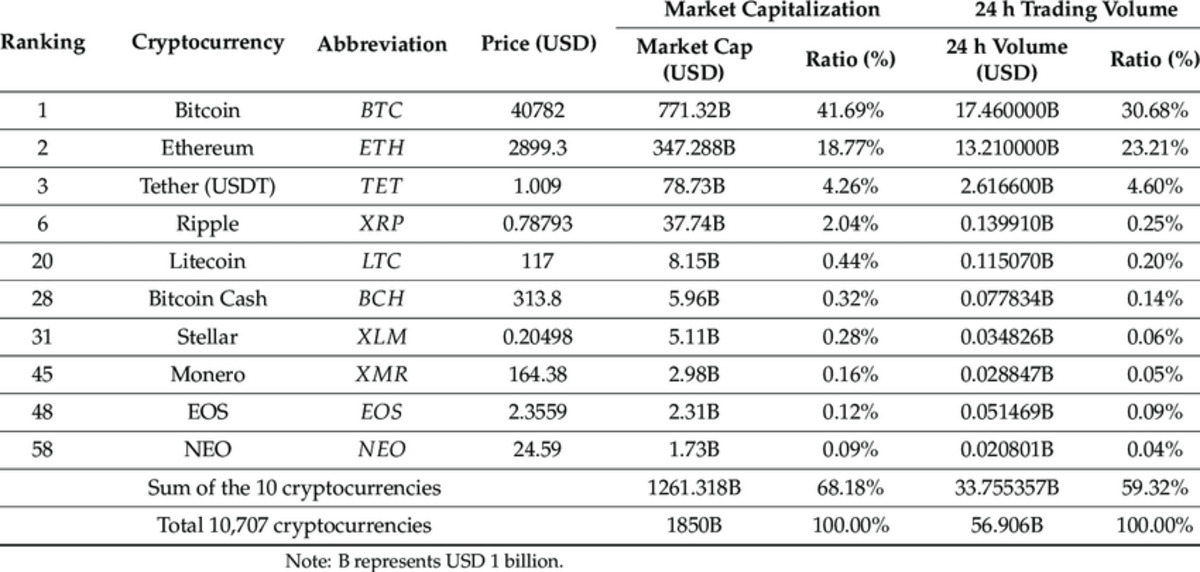Introduction
Welcome to the world of cryptocurrency, where digital currencies have revolutionized the way we transact and store value. As more and more people embrace this decentralized form of money, it is essential to understand the key concepts that drive the crypto market. One such concept is liquidity.
Liquidity plays a crucial role in any financial market, including the cryptocurrency market. It refers to the ease with which an asset can be bought or sold without causing significant price fluctuations. In simple terms, it measures the ability to convert an asset into cash quickly and at a fair price.
In the context of cryptocurrency, liquidity is particularly important due to the decentralized nature of these digital assets. Unlike traditional markets, such as stocks or commodities, where trading takes place on centralized exchanges, cryptocurrency trading occurs on a variety of platforms, both centralized and decentralized.
This decentralized nature creates challenges when it comes to liquidity. The fragmented nature of trading platforms, coupled with the lack of regulation and standardized processes, can lead to significant liquidity variations across different cryptocurrencies and even within the same cryptocurrency.
Having a deep understanding of liquidity in the cryptocurrency market is essential for investors, traders, and enthusiasts. In this article, we will explore what liquidity means in the context of cryptocurrency, its importance, the factors that affect liquidity, and how to measure and improve liquidity in the cryptocurrency market.
So, buckle up and get ready to dive into the fascinating world of liquidity in cryptocurrency!
What is Liquidity?
Liquidity refers to the ease and speed with which an asset can be bought or sold in the market without causing significant price fluctuations. It is a measure of how readily an asset can be converted into cash at a fair price.
In the context of the cryptocurrency market, liquidity plays a vital role in determining the efficiency and stability of trading. It reflects the depth of the market and the availability of counterparties willing to transact at any given time.
There are two key components of liquidity:
- Market Liquidity: This refers to the overall level of activity and volume in the market. A highly liquid market has a large number of participants, facilitating quick and seamless trading. On the other hand, a market with low liquidity may experience slower trading and wider bid-ask spreads.
- Asset Liquidity: This refers to the ease of buying or selling a specific asset, such as a particular cryptocurrency. It depends on the trading volumes and order book depth for that asset. High asset liquidity ensures that large orders can be executed without significantly impacting the price, while low asset liquidity can lead to price slippage.
Overall, liquidity is essential because it provides stability and enables efficient price discovery in the market. It allows traders and investors to enter and exit positions easily and at fair prices, promoting a fair and transparent trading environment.
It’s important to note that liquidity can vary greatly between different cryptocurrencies. Some cryptocurrencies, like Bitcoin and Ethereum, tend to have higher liquidity due to their large market capitalization and widespread adoption. In contrast, smaller or less popular cryptocurrencies may have lower liquidity, making it more challenging to trade them without impacting their prices.
Understanding liquidity is crucial for anyone involved in the cryptocurrency market, whether you’re a trader looking for optimal trading conditions or an investor seeking to ensure your assets can be easily bought or sold. By grasping the fundamentals of liquidity, you can make more informed decisions and navigate the market with greater confidence.
Liquidity in Cryptocurrency
Liquidity in the cryptocurrency market refers to the ease with which cryptocurrencies can be bought or sold at any given time without causing significant price fluctuations. Due to the decentralized nature of cryptocurrencies, liquidity dynamics differ from those of traditional financial markets.
Unlike stocks or commodities that trade on centralized exchanges, cryptocurrencies are traded on various platforms, both centralized and decentralized. This fragmentation creates challenges in maintaining consistent levels of liquidity across different cryptocurrencies.
In the cryptocurrency market, liquidity is driven by several factors:
- Trading Volume: Higher trading volumes indicate a more liquid market, as there are more buyers and sellers willing to transact. Cryptocurrencies with high trading volumes generally have better liquidity and tighter bid-ask spreads.
- Market Depth: Market depth refers to the volume of buy and sell orders at various price levels. Cryptocurrencies with deeper order books have greater liquidity, as there is a larger pool of orders to match against, reducing the impact of large orders on price.
- Number of Market Participants: The more participants there are in the market, the higher the liquidity. When there are many buyers and sellers, it is easier to find counterparties to transact with, enhancing liquidity.
- Listing on Exchanges: Cryptocurrencies listed on multiple reputable exchanges tend to have better liquidity. The availability of different trading pairs and access to a wide range of market participants contribute to higher liquidity levels.
It is worth noting that liquidity can vary significantly between different cryptocurrencies. Highly popular cryptocurrencies such as Bitcoin and Ethereum generally have higher liquidity due to their large market capitalization and widespread adoption. On the other hand, less well-known or newer cryptocurrencies may have lower liquidity, making it more challenging to trade them without impacting their prices.
Liquidity is of utmost importance in the cryptocurrency market as it facilitates efficient price discovery, reduces price manipulation risks, and enables traders to enter and exit positions smoothly. Moreover, higher liquidity enhances market stability and instills confidence among market participants.
Understanding liquidity dynamics in the cryptocurrency market is crucial for traders, investors, and market participants. By evaluating the liquidity of different cryptocurrencies, one can make more informed decisions, mitigate transaction costs, and optimize their trading strategies.
Importance of Liquidity
Liquidity plays a vital role in the cryptocurrency market and carries significant importance for traders, investors, and the overall functioning of the market. Here are some key reasons why liquidity is crucial:
- Efficient Market Functioning: Liquidity ensures smooth and efficient market functioning by providing easy access to buyers and sellers. It allows for quick transactions and minimizes the impact of large orders on prices, promoting fair price discovery.
- Price Stability: Adequate liquidity helps maintain price stability in the cryptocurrency market. When there is high liquidity, even large buy or sell orders can be absorbed without causing significant price swings, reducing price manipulation risks.
- Reduced Transaction Costs: High liquidity leads to tighter bid-ask spreads, reducing transaction costs for traders. A narrow spread means that there is a smaller difference between the highest price a buyer is willing to pay and the lowest price a seller is willing to accept.
- Flexibility in Trading: Liquidity allows traders to enter and exit positions quickly and at desired prices. It provides the flexibility to execute trades promptly, take advantage of market opportunities, and manage risks effectively.
- Attracting Institutional Investors: Institutional investors typically require high liquidity when entering the cryptocurrency market. Robust liquidity ensures that they can trade large volumes without causing excessive price volatility and enhances the overall credibility and attractiveness of the market.
- Market Depth: Liquidity contributes to market depth, which refers to the volume of buy and sell orders at different price levels. Deeper order books provide traders with a broader range of options and better opportunities for executing trades at desired prices.
The importance of liquidity cannot be overstated, as it underpins the overall health and stability of the cryptocurrency market. It enables efficient price discovery, reduces risks, and facilitates optimal trading conditions for market participants.
However, it’s important to note that liquidity is not a static characteristic and can vary across different cryptocurrencies and over time. Market conditions, trading volumes, and the level of market participation all impact liquidity levels. Therefore, market participants must stay informed and adapt their strategies accordingly.
By understanding the importance of liquidity and staying abreast of liquidity dynamics, traders and investors can make more informed decisions, minimize risks, and capitalize on market opportunities in the cryptocurrency space.
Factors Affecting Liquidity in Cryptocurrency
Liquidity in the cryptocurrency market is influenced by various factors, and understanding these factors is crucial for assessing and analyzing liquidity levels. Here are some key factors that affect liquidity in cryptocurrency:
- Trading Volume: Trading volume is one of the most significant factors impacting liquidity. Higher trading volumes generally indicate greater market activity, attracting more market participants and increasing liquidity. Cryptocurrencies with higher trading volumes tend to have better liquidity compared to those with lower volumes.
- Market Participants: The number and diversity of market participants have a direct impact on liquidity. A larger pool of buyers and sellers provides more liquidity by offering a higher number of potential trading counterparties, leading to increased market depth and improved liquidity levels.
- Market Concentration: The concentration of trading on specific exchanges can affect liquidity. Cryptocurrencies that are heavily traded on a few popular exchanges may experience significant liquidity fluctuations if there are issues with the functioning of those exchanges or regulatory interventions.
- Market Regulation: The regulatory environment plays a role in liquidity dynamics. Favorable and clear regulations can attract more market participants and contribute to higher liquidity levels. Conversely, uncertain or restrictive regulations can hinder liquidity and discourage market participation.
- Listing on Exchanges: The availability of a cryptocurrency on multiple reputable exchanges can impact liquidity. Cryptocurrencies with listings on several exchanges provide greater accessibility, attract more traders and investors, and generally experience better liquidity.
- Market Manipulation Risks: The risk of market manipulation can also affect liquidity. If traders perceive a high risk of manipulation, they may be reluctant to participate in the market, leading to lower liquidity levels. Transparency, integrity, and measures to prevent market manipulation are essential in maintaining liquidity.
- Market Volatility: High market volatility can impact liquidity by making it challenging to match buyers and sellers at desired prices. During periods of extreme volatility, liquidity may dry up, and bid-ask spreads may widen, making it more difficult to execute trades without causing significant price fluctuations.
It’s important to note that these factors can interact with each other and have a cumulative effect on liquidity. For example, higher trading volumes attract more participants, which in turn leads to better liquidity. Similarly, market concentration can have both positive and negative effects on liquidity depending on the circumstances.
Understanding the factors that influence liquidity in cryptocurrency is crucial for assessing market conditions, predicting liquidity fluctuations, and adapting trading strategies accordingly. Market participants should stay informed about these factors and regularly analyze liquidity dynamics to make informed decisions in the dynamic cryptocurrency market.
Benefits of High Liquidity
High liquidity in the cryptocurrency market brings numerous advantages for traders, investors, and the overall health of the market. Let’s explore some of the key benefits of high liquidity:
- Improved Market Efficiency: High liquidity ensures that buy and sell orders can be executed quickly and at fair market prices. This improves market efficiency by reducing the impact of large trades on prices and facilitating smoother price discovery.
- Tight Bid-Ask Spreads: A liquid market typically exhibits tighter bid-ask spreads, which refers to the difference between the highest price a buyer is willing to pay and the lowest price a seller is willing to accept. Narrow spreads reduce transaction costs for traders, making it more cost-effective to enter and exit positions.
- Reduced Price Slippage: Price slippage occurs when the executed price of a trade deviates from the expected price due to inadequate liquidity. High liquidity minimizes price slippage by ensuring that large orders can be filled without substantially impacting the market price.
- Greater Trading Flexibility: Traders benefit from high liquidity as it provides greater flexibility in executing trades. They can easily enter or exit positions at desired prices and quickly adjust their strategies in response to market conditions, enhancing their trading opportunities.
- Enhanced Market Stability: High liquidity contributes to market stability by reducing the potential for price manipulation. With a larger pool of participants and more significant trading volumes, it becomes harder for individual traders or groups to manipulate prices for their own gain.
- Attractiveness to Institutional Investors: Institutional investors are more likely to enter the cryptocurrency market when it exhibits high liquidity. Robust liquidity ensures that institutional investors can trade large volumes without significantly impacting prices. Their participation adds credibility and liquidity depth to the market.
- Improved Execution for Large Orders: High liquidity is essential for executing large cryptocurrency orders efficiently. A liquid market enables traders to buy or sell a significant amount of cryptocurrency without causing substantial price slippage, ensuring that their trades can be executed at or near the desired price.
These benefits highlight the importance of high liquidity for a healthy and efficient cryptocurrency market. High liquidity enables transparent price discovery, reduces transaction costs, fosters market stability, attracts institutional participation, and provides traders with optimal trading conditions.
Market participants should consider liquidity as a crucial factor when selecting cryptocurrencies to trade or invest in. Assessing liquidity levels can help traders and investors make more informed decisions and tailor their strategies to take advantage of the benefits offered by highly liquid markets.
Risks of Low Liquidity
Low liquidity in the cryptocurrency market poses several risks for traders, investors, and the overall functioning of the market. Let’s explore some of the key risks associated with low liquidity:
- Price Manipulation: Cryptocurrencies with low liquidity are more vulnerable to price manipulation. With fewer market participants and limited trading volumes, it becomes easier for individuals or groups to influence prices through large orders or coordinated trading activities.
- Increased Price Volatility: Low liquidity can lead to increased price volatility. Even relatively small buy or sell orders can cause significant price swings in illiquid markets. This volatility can make it more challenging for traders to predict price movements and execute trades at desired prices.
- Wider Bid-Ask Spreads: In illiquid markets, bid-ask spreads tend to be wider. This means there is a larger difference between the prices at which buyers are willing to buy and sellers are willing to sell. As a result, traders may incur higher transaction costs when entering or exiting positions.
- Limited Trading Opportunities: Low liquidity can limit the number and variety of trading opportunities available in the market. Traders may struggle to find counterparties for their desired trades, leading to fewer options and potentially missing out on potential profitable trades.
- Increased Price Impact: In illiquid markets, even small buy or sell orders can have a significant impact on prices. This price impact, also known as price slippage, occurs when the executed price deviates from the expected price due to insufficient liquidity. Traders may experience difficulty filling orders at desired prices, leading to potential losses.
- Challenges in Exiting Positions: Low liquidity can make it challenging for traders to exit their positions quickly. Without sufficient liquidity, it can take longer to find buyers or sellers for a cryptocurrency, potentially resulting in delayed or unfavorable trade executions.
- Market Illiquidity Events: In extreme cases of low liquidity, illiquid markets can experience liquidity crises. During these events, market participants may struggle to execute trades, causing trading disruptions and potential price distortions.
These risks highlight the importance of considering liquidity when trading or investing in cryptocurrencies. Understanding the liquidity dynamics of a particular cryptocurrency can help traders and investors manage their risks effectively and make more informed decisions.
It’s essential to note that market liquidity can vary over time and is influenced by factors such as trading volumes, market participation, and regulatory developments. Therefore, market participants should continually monitor liquidity conditions and adapt their strategies accordingly to mitigate the risks associated with low liquidity.
How to Measure Liquidity in Cryptocurrency
Measuring liquidity in the cryptocurrency market is essential for traders, investors, and market participants to assess the ease of buying or selling a particular cryptocurrency. While liquidity is a multifaceted concept, several key metrics and indicators can be used to gauge liquidity levels. Here are some commonly used methods to measure liquidity:
- Trading Volume: Trading volume is a fundamental indicator of liquidity. Higher trading volumes generally indicate greater market activity and liquidity. By analyzing the trading volume of a cryptocurrency, traders and investors can get an idea of its liquidity level.
- Order Book Depth: Order book depth refers to the volume of buy and sell orders at different price levels. Deeper order books indicate better liquidity, as there are more participants ready to transact at various price points. Traders can assess order book depth to determine the potential liquidity of a cryptocurrency.
- Spread Analysis: Bid-ask spreads provide insights into liquidity. A narrow spread indicates tight liquidity, while a wider spread suggests lower liquidity. By examining the bid-ask spreads of a cryptocurrency, traders can assess the liquidity conditions and potential transaction costs.
- Market Impact Analysis: Market impact analysis measures how significantly a trade affects the price of a cryptocurrency. Low market impact indicates higher liquidity, as large orders can be executed without substantially moving the market price. By analyzing the market impact of a trade, traders can gauge liquidity levels.
- Liquidity Ratios: Various liquidity ratios, such as the bid-ask spread ratio or the volume-to-order ratio, can be calculated to assess liquidity. These ratios compare trading volumes, spreads, or order book depth to provide an indication of liquidity levels relative to other cryptocurrencies.
- Exchange Listing and Trading Pairs: The listing of a cryptocurrency on reputable exchanges and availability of multiple trading pairs can contribute to its liquidity. Cryptocurrencies listed on well-established exchanges with a wide variety of trading pairs generally have better liquidity compared to those with limited exchange listings.
It is important to note that these measures of liquidity are not exhaustive, and different metrics may be more relevant depending on the specific needs and goals of traders or investors. Additionally, liquidity measurements can vary across different cryptocurrency exchanges, so it may be beneficial to consider liquidity from multiple platforms.
By employing these various methods to measure liquidity, traders and investors can gain insights into the liquidity conditions of cryptocurrencies and make more informed decisions about their trading strategies and investment choices.
Improving Liquidity in the Cryptocurrency Market
Liquidity is a critical aspect of the cryptocurrency market, and efforts to improve liquidity can enhance market efficiency, attract more participants, and contribute to a healthier trading environment. Here are some strategies and initiatives aimed at improving liquidity in the cryptocurrency market:
- Regulation: Clear and favorable regulations can provide a framework that attracts institutional investors and increases market participation, thereby improving liquidity. Regulatory measures that promote transparency, security, and market integrity are vital for building trust and confidence among market participants.
- Enhanced Market Surveillance: Implementing robust market surveillance mechanisms can help identify and deter market manipulation, ensuring a fair and level playing field for all participants. Surveillance tools and technologies can aid in detecting suspicious trading patterns and manipulative behaviors that can harm liquidity in the market.
- Standardized Trading Practices: Encouraging and adopting standardized trading practices, such as order types and execution rules, across different cryptocurrency exchanges can enhance liquidity. Standardization promotes consistency and reduces operational complexities, making it easier for traders and investors to engage with the market.
- Increased Market Access and Exchange Listings: Expanding the availability of cryptocurrencies on reputable exchanges and increasing the number of trading pairs can enhance liquidity. Broader market access allows for greater participation and trading opportunities, attracting more traders and investors to the market.
- Market-Making Programs: Market-making programs involve incentivizing liquidity providers to participate in the market by offering rewards or reduced trading fees. These programs help improve liquidity by ensuring a continuous presence of buy and sell orders in the market, reducing spreads, and providing better trading opportunities for participants.
- Decentralized Exchanges (DEXs): DEXs allow for peer-to-peer trading without the need for intermediaries. By eliminating central points of control and enabling direct trading between participants, DEXs can contribute to better liquidity by fostering a more inclusive and efficient trading environment.
- Liquidity Aggregation: Liquidity aggregation platforms pool liquidity from various exchanges, consolidating it into a single accessible marketplace. These platforms enhance liquidity by aggregating orders from multiple sources, providing traders with a larger pool of liquidity and tighter spreads.
These initiatives and approaches are designed to address the challenges of liquidity in the cryptocurrency market and create a more robust and efficient trading ecosystem. By implementing these strategies, market participants can benefit from increased liquidity, improved trading conditions, and enhanced market stability.
It is important to note that improving liquidity is an ongoing process that requires collaboration among regulators, exchanges, liquidity providers, and market participants. Continuous evaluation of liquidity levels and the implementation of effective measures will contribute to the long-term development and maturation of the cryptocurrency market.
Conclusion
Liquidity plays a vital role in the cryptocurrency market, impacting trading efficiency, price stability, and overall market health. Understanding liquidity dynamics and its measurement is essential for traders, investors, and market participants to make informed decisions and navigate the cryptocurrency market successfully.
In this article, we explored various aspects of liquidity in the cryptocurrency market. We delved into what liquidity means, its importance, and the factors that affect liquidity levels in the market. Liquidity metrics, including trading volume, order book depth, and bid-ask spreads, were explored as key measures of liquidity.
We discussed the benefits of high liquidity, such as improved market efficiency, reduced transaction costs, and enhanced trading flexibility. Conversely, the risks associated with low liquidity, such as increased price volatility and limited trading opportunities, were also highlighted.
Furthermore, we explored strategies to measure liquidity and improve liquidity in the cryptocurrency market. Methods such as analyzing trading volumes, order book depth, and market impact were discussed as ways to assess liquidity levels. Initiatives like regulation, enhanced market surveillance, and market-making programs were explored as means to enhance liquidity in the market.
Enhancing liquidity in the cryptocurrency market requires ongoing collaboration and efforts from regulators, exchanges, liquidity providers, and market participants. By continuously evaluating liquidity levels and implementing effective measures, we can foster a more efficient, transparent, and stable trading environment.
As the cryptocurrency market continues to mature and evolve, liquidity will remain a critical aspect to monitor and navigate. By understanding liquidity and its implications, traders and investors can optimize their trading strategies, mitigate risks, and capitalize on the opportunities presented by the dynamic world of cryptocurrencies.

























